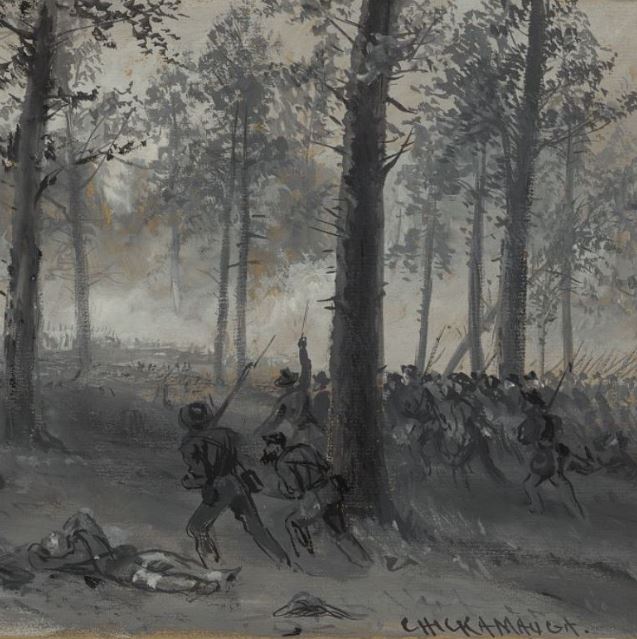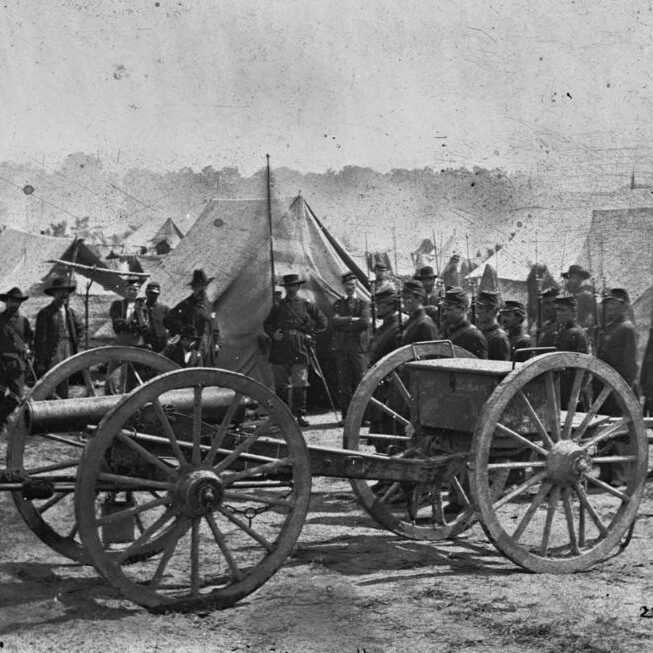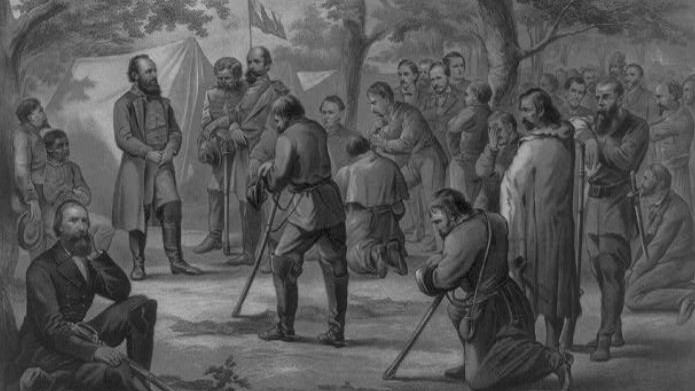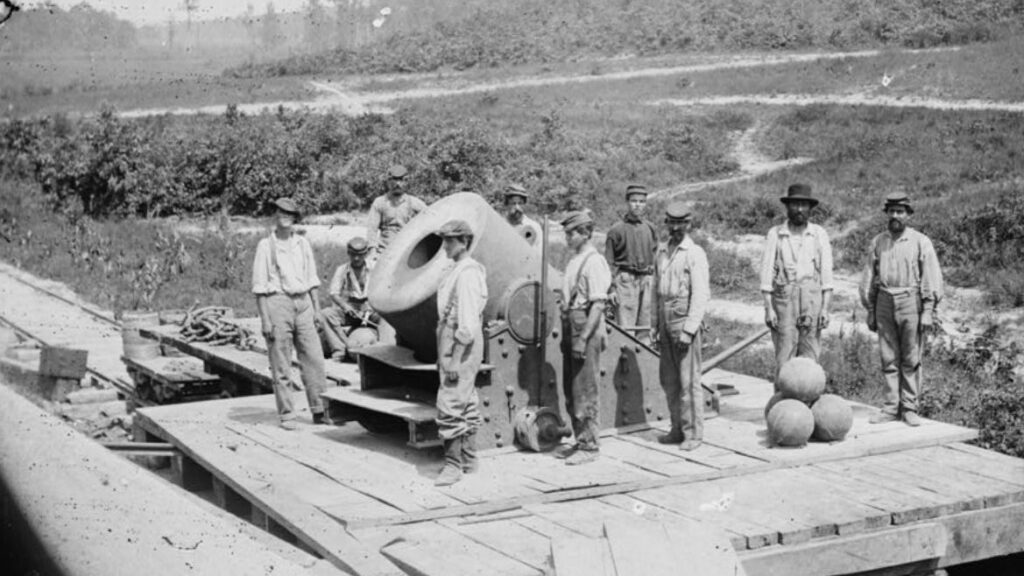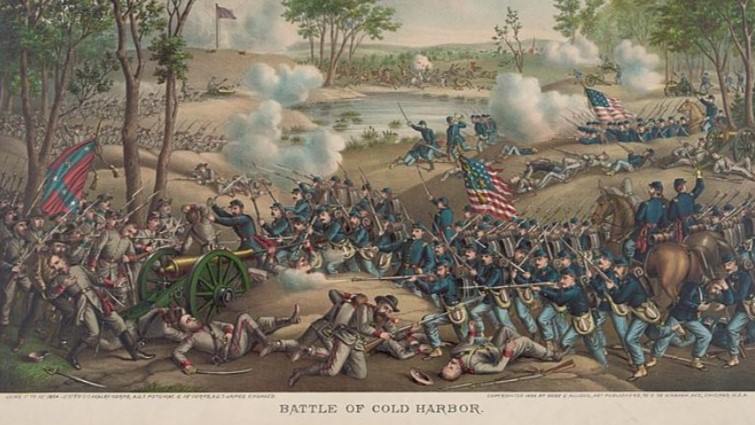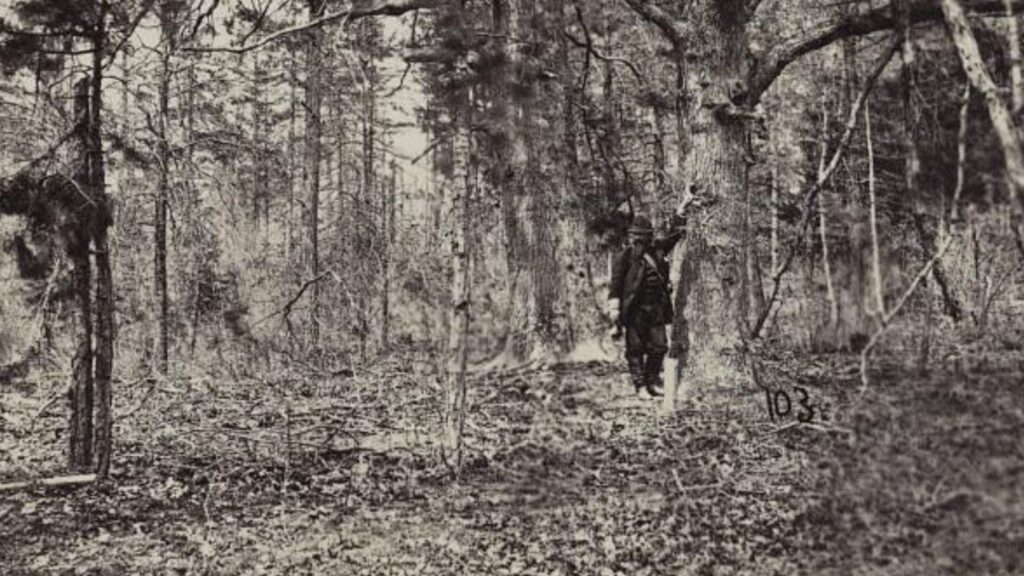During the American Civil War, the Southern states faced numerous challenges. Yet amidst adversity, they secured a number of important victories for the South over the North.
This article explores the 5 most crucial victories for the South during this conflict, examining the strategic importance, resilience, and unforeseen turning points that marked their successes.
1. First Battle of Bull Run (First Manassas), Virginia
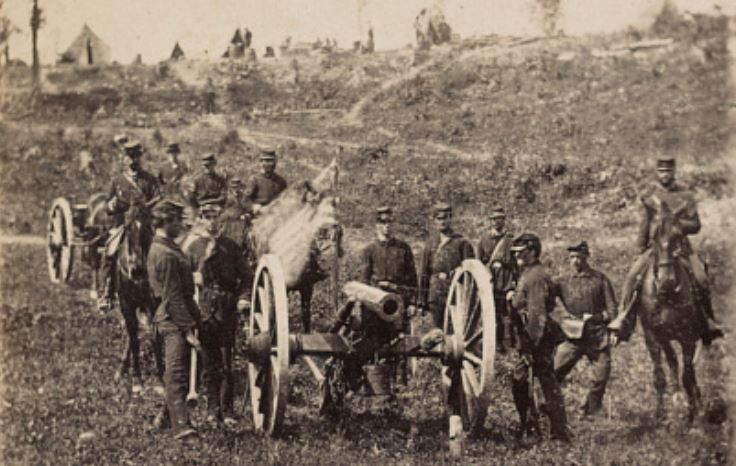
The Battle
The First Battle of Bull Run, also known as First Manassas, was fought on July 21, 1861 in Prince William County, Virginia. It was the first major land battle of the American Civil War.
The Confederate forces under Brig. Gen. P.G.T Beauregard were camped along Bull Run creek near the vital railroad junction at Manassas Junction. Beauregard was protecting this key strategic location just 30 miles from Washington D.C.
The Union Army under Brig. Gen. Irvin McDowell advanced from Washington with the aim of driving Beauregard from Manassas Junction and eventually capturing the Confederate capital of Richmond.
On the morning of July 21, McDowell launched his attack, sending two divisions across Bull Run at Sudley Springs Ford to outflank Beauregard’s left.
Fierce fighting erupted as the Union brigades under Brig. Gens. Ambrose Burnside and William Sherman collided with Confederates under Col. Nathan Evans along Matthews Hill.
Despite tenacious defense from Evans’s men, the Northerners eventually pushed the Southerners back to Henry House Hill.
However, the Confederate lines were bolstered around noon by the arrival of reinforcements from the Shenandoah Valley by railroad.
These fresh troops included the brigade of Brig. Gen. Thomas J. “Stonewall” Jackson. Jackson’s brigade staunchly defended Henry House Hill, giving Johnston time to construct a defensive line.

In the afternoon, poorly coordinated Union attacks were unable to dislodge the Confederates from their position.
A failed flanking move by Col. Dixon Miles’s division opened the door for a crushing counterattack by Confederates under Brig. Gens. Barnard Bee, Francis Bartow and Edmund Kirby Smith.
The shocked and exhausted Union soldiers began a disorganized retreat towards Bull Run, panicked by artillery fire and Confederates under Col. J.E.B. Stuart.
The Strategic Importance
The Union forces fled back to Washington D.C. in defeat.
This decisive Confederate victory provided a major psychological boost in the early months of the war, while demoralizing the Union.
The battle exposed weaknesses in Union leadership, training and strategy.
Bull Run shattered optimistic Northern hopes of quickly crushing the rebellion. It signaled to Abraham Lincoln that ending the war would be a long, grueling task.
The Casualties
The Confederacy suffered around 1,980 casualties. The Union lost 2,700 men. The battle was especially bloody for inexperienced troops on both sides.
2. Battle of Chancellorsville, Virginia
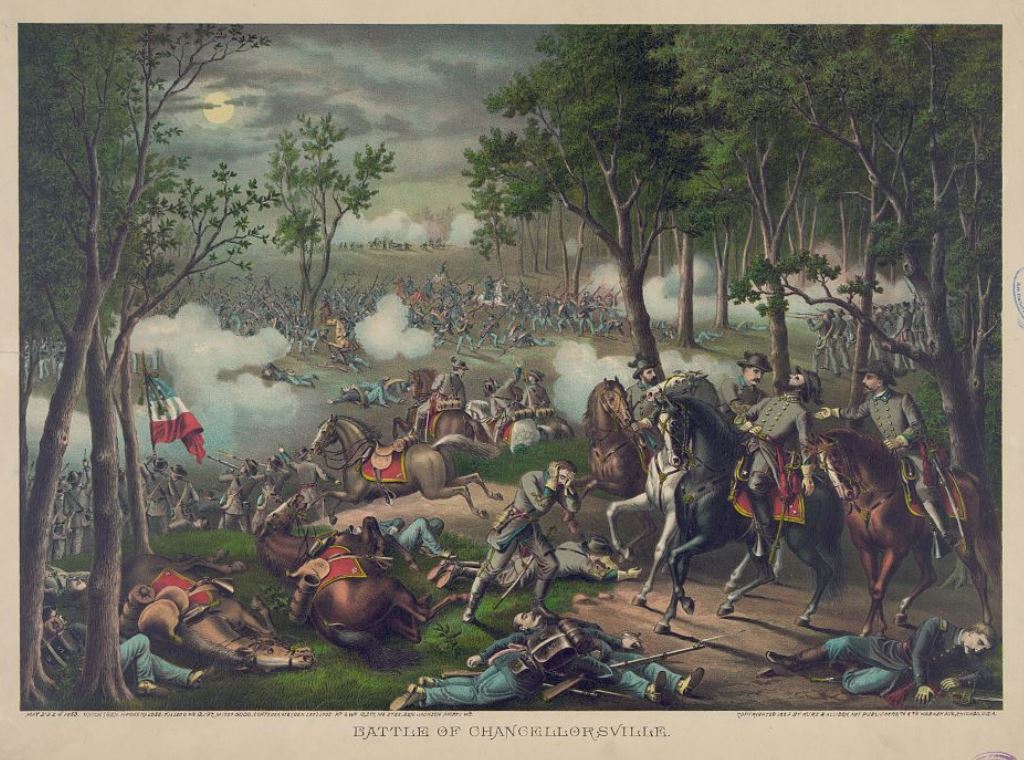
The Battle of Chancellorsville took place from April 30 to May 6, 1863 in Spotsylvania County, Virginia. It is considered General Robert E. Lee’s greatest victory during the war.
The Battle
The Battle of Chancellorsville pitted Robert E. Lee’s Army of Northern Virginia against Joseph Hooker’s Army of the Potomac from April 30 to May 6, 1863 in Spotsylvania County, Virginia.
Despite being outnumbered two-to-one with just 60,000 men against Hooker’s 130,000, Lee audaciously divided his forces to attack the Union’s flanks.
On May 1, Stonewall Jackson led his Second Corps on a daring twelve-mile march around the Union’s exposed right flank.
Jackson’s men overwhelmed the Union XI Corps by surprise that evening, driving them back in confusion. Meanwhile, Lee’s remaining two corps confronted Hooker’s main force around the crossroads of Chancellorsville.
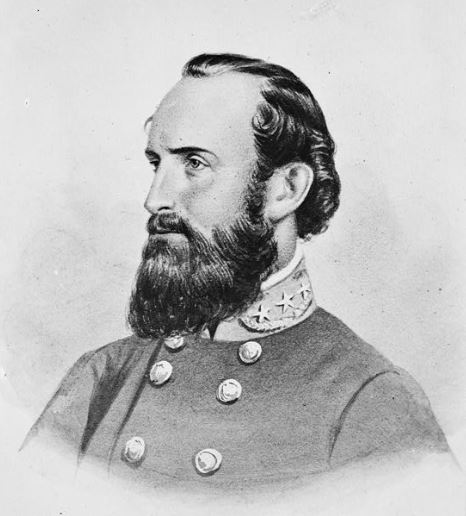
Over the next few days, Lee kept up the pressure on the Union forces, pushing Hooker into retreating from Chancellorsville to defensive lines circling United States Ford.
On May 2, Jackson led another flanking march against the Union right, aiming to cut off their escape route. But that night he was accidentally fired upon by his own troops in the darkness, sustaining wounds that led to his death on May 10.
Despite losing his brilliant lieutenant, Lee continued to goad Hooker into retreating across the Rappahannock River on the night of May 5-6, firmly securing victory.
Chancellorsville represented Lee’s tactical masterpiece, seizing the initiative and shattering a larger opponent through bold maneuvers. But the Confederacy paid dearly with the loss of irreplaceable Stonewall Jackson.
Strategic Significance
Chancellorsville represented Lee’s most daring maneuver of the war. Outnumbered 2-to-1, he split his army and attacked, outflanking and crushing Union forces.
The victory further enhanced Lee’s reputation of military brilliance.
However, losing Jackson was a major blow, as he was Lee’s most trusted lieutenant. The Confederate victory came at a high cost but emboldened them to continue their fight against the superior Union forces.
Casualties
The South suffered approximately 12,750 casualties. The Union suffered 17,250 casualties.
3. Second Battle of Bull Run (Second Manassas), Virginia
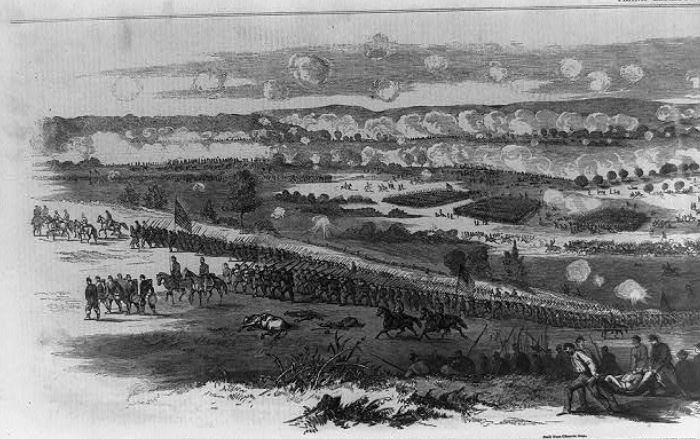
The Second Battle of Bull Run (Second Manassas) was fought August 28–30, 1862 in Prince William County, Virginia. It was a major victory by Confederates under General Robert E. Lee over the Union Army.
The Battle
The Second Battle of Bull Run pitted Robert E. Lee’s Army of Northern Virginia against John Pope’s Army of Virginia from August 28-30, 1862. Lee sought to destroy Pope’s army near the old First Bull Run battlefield and threaten Washington D.C.
Pope mistakenly believed Lee was retreating after initial skirmishing on August 28. He pursued aggressively, only to have Lee flank him and smash into the exposed Union lines on August 29.
Vicious fighting erupted as Lee’s troops overran the Union left flank and attacked the center along Chinn Ridge.
On August 30, Pope renewed assaults against Jackson’s men, hoping to crush the Confederates before Longstreet reinforced them. But Longstreet crushed the Union right flank, nearly encircling Pope.
Only desperate stands by regiments like the 20th Maine prevented a total rout.
Lee failed to cut off Pope’s retreat, allowing the bloodied Union army to withdraw toward Washington.
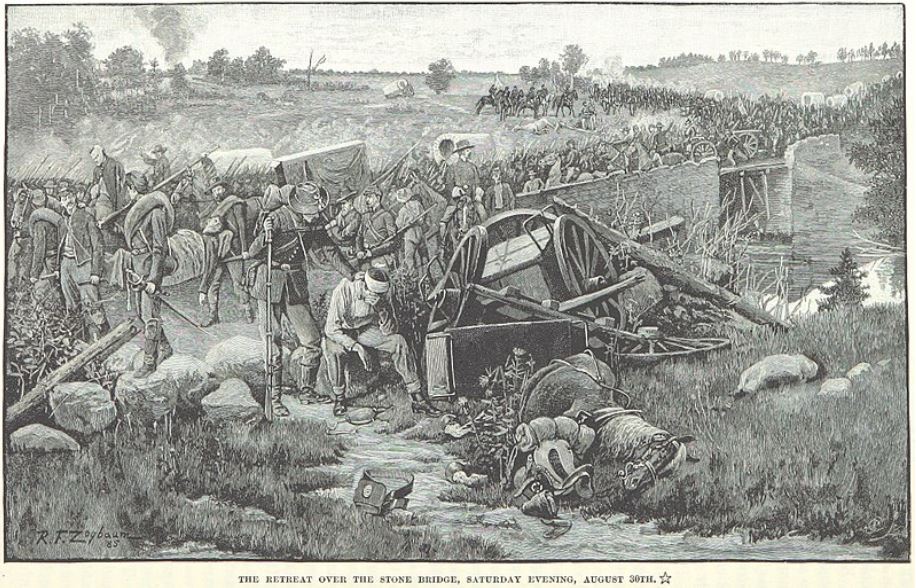
Second Bull Run nearly annihilated Pope’s Army of Virginia and opened the way for Lee’s first invasion of the North.
The battle demonstrated Lee’s tactical superiority in maneuvering and deceiving Union forces. But Lee failed to achieve his goal of destroying the Union army completely due to exhaustion of his troops and lack of reinforcements.
Casualties
The Confederates lost around 12,750 casualties. The Union suffered 17,250 casualties.
Strategic Significance
The South achieved a major victory that opened up invasion routes into Maryland and Northern Virginia.
Pope was forced to retreat to defend Washington D.C., severely beaten. Union morale was devastated while the South was elated. However, Lee’s failure to follow up and destroy Pope’s army prevented greater strategic achievements. The victory set the stage for Lee’s first invasion of the North weeks later at the Battle of Antietam.
4. Battle of Fredericksburg, Virginia
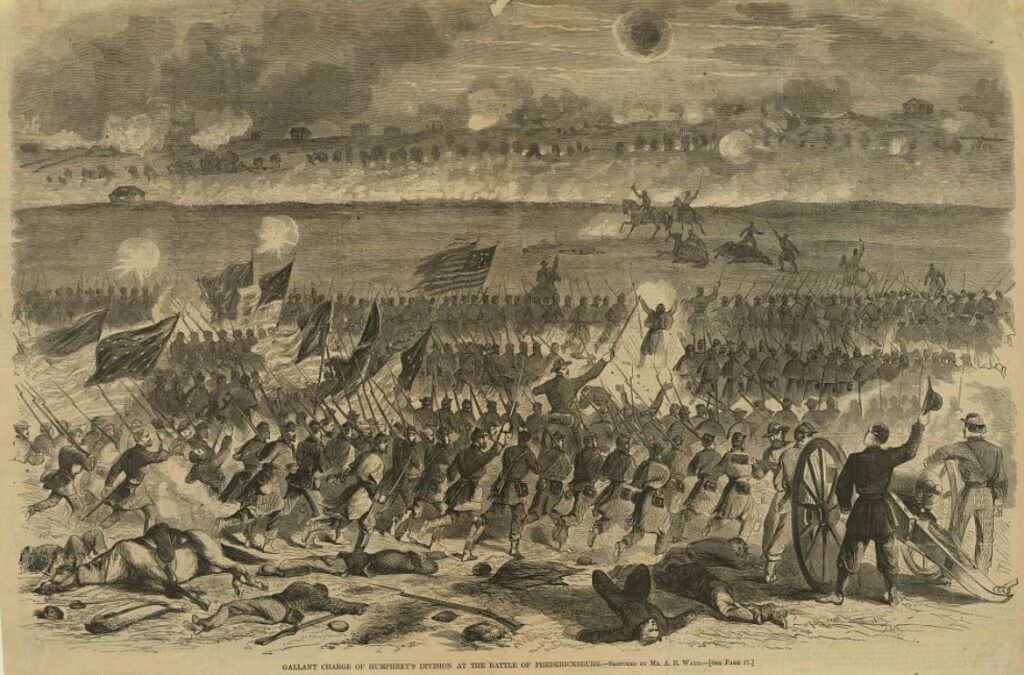
Fought December 11–15, 1862 in and around Fredericksburg, Virginia, this battle resulted in one of the most decisive Confederate victories of the war.
The Battle
The Battle of Fredericksburg saw Union General Ambrose Burnside’s Army of the Potomac clash with Robert E. Lee’s Army of Northern Virginia from December 11-15, 1862. Burnside wanted to cross the Rappahannock River and use Fredericksburg as a base to attack Richmond.
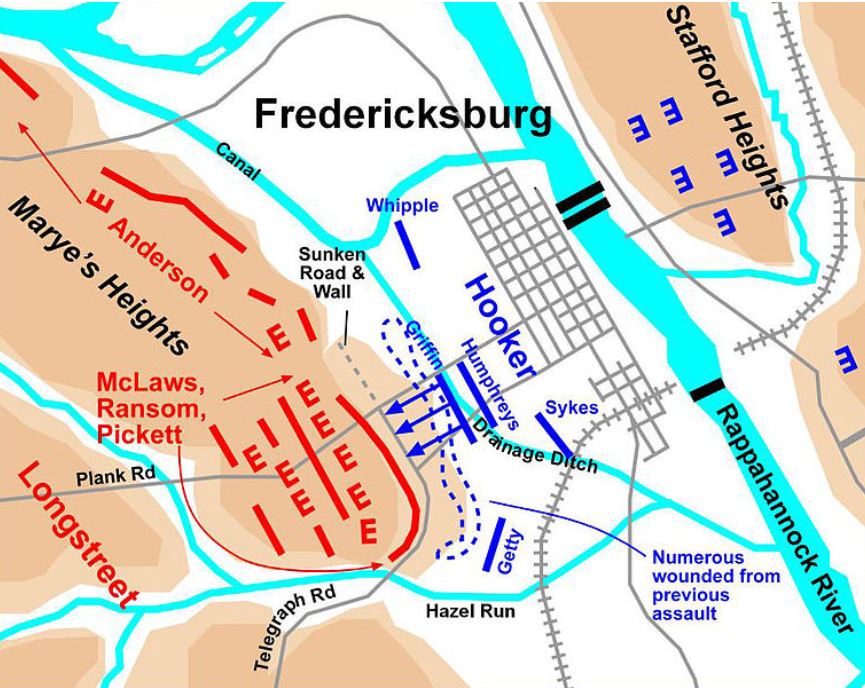
But Lee’s troops arrived first and dug into strong defensive positions behind a stone wall on Marye’s Heights south of the river.
After an initial delay crossing the Rappahannock, Burnside launched repeated frontal assaults against the Confederate defenses on December 13. Wave after wave of Union troops were mowed down by devastating rifle and artillery fire.
Simultaneously, Lee dispatched Stonewall Jackson to repel the Union’s left flank along Prospect Hill.
By nightfall, Burnside had gained no ground after suffering over 12,000 casualties. The bloody defeat was deeply demoralizing and ended Union hopes for redeeming earlier failures at Bull Run and Chancellorsville that year.
Strategic Significance
Fredericksburg represented a humiliating defeat for the Army of the Potomac under Burnside. Union morale plummeted while confidence surged for the Confederacy after this decisive win.
Fredericksburg reinforced the danger of frontal assaults against entrenched defenses armed with modern rifles.
Casualties
Union casualties were appalling at over 12,650. The South lost around 5,350 men.
5. Battle of Chickamauga, Tennessee
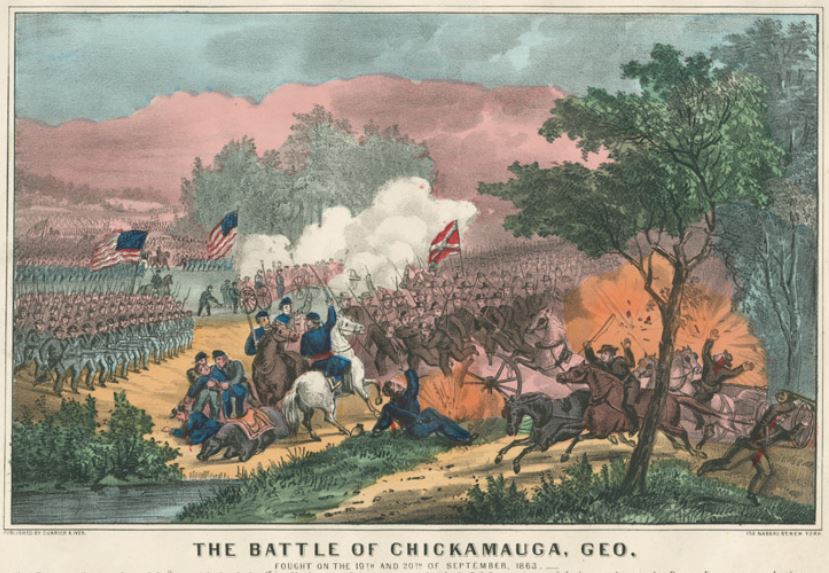
Fought September 19–20, 1863, Chickamauga was the South’s first major victory in the Western Theater.
The Battle
The Battle of Chickamauga was fought September 19-20, 1863 in the woods surrounding Chickamauga Creek. It pitted Union General William Rosecrans’ Army of the Cumberland against General Braxton Bragg’s Confederate Army of Tennessee.

On September 19, the armies collided as the Union attempted to maneuver around the Confederates.
Bragg launched uncoordinated attacks that Rosecrans repulsed, allowing him to consolidate around Chickamauga Creek. However, on September 20, Bragg unleashed crushing assaults that finally broke Rosecrans’ line.
Rosecrans and part of his army managed to retreat to Chattanooga, Tennessee after a defensive stand by forces under George H. Thomas. But nearly one-third of the Union army was scattered in defeat.
The Confederate victory boosted Southern morale after recent defeats at Gettysburg and Vicksburg.
Strategic Significance
This marked a significant tactical victory for the Confederacy in the Western Theater after a string of defeats in 1863. Bragg had finally defeated Rosecrans’ army but failed to effectively follow up and capitalize on the victory, allowing besieged Union forces to hold Chattanooga. The win proved temporary as Union forces reversed the setback weeks later, eventually securing Tennessee.
Casualties
Total casualties were staggering with over 34,000 combined. The Union lost around 16,150, the Confederacy 18,450. Chickamauga was only behind Gettysburg in total casualties during the war.
Final Thoughts
These five battles represented the most significant victories achieved by the Confederacy during the four year conflict against the Union. From Bull Run stemming Union ambitions in 1861 to Chickamauga finally allowing Southern celebration in the Western Theater in 1863, they provided critical boosts to Confederate morale and aspirations for independence.
Victories at Manassas, Fredericksburg and Chancellorsville under Robert E. Lee strengthened his reputation as a brilliant military strategist.
The South’s failure to fully capitalize after key battles allowed the Union to eventually regroup. The Confederate’s lack of manpower and supplies compared to the Union meant Lee and other leaders could not replace casualties as easily despite stunning wins.
These hard-fought Confederate victories were not enough to ultimately achieve Southern independence in the face of the Union’s advantages.
Further Reading
If you enjoyed this article, you may be interested to read more about the American Civil War events, or perhaps read about the bloodiest battles of the Civil War. Read here for more general American history.

